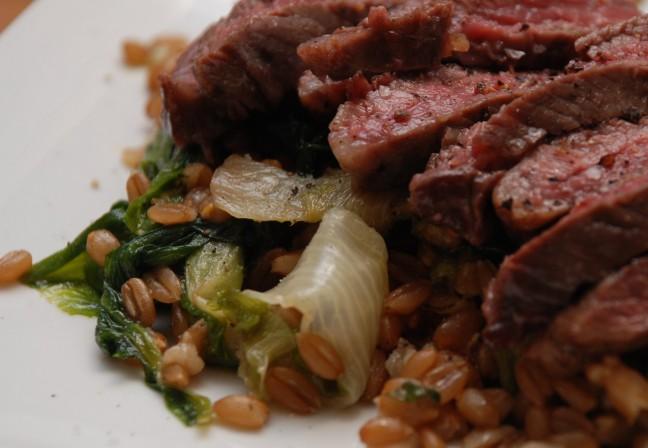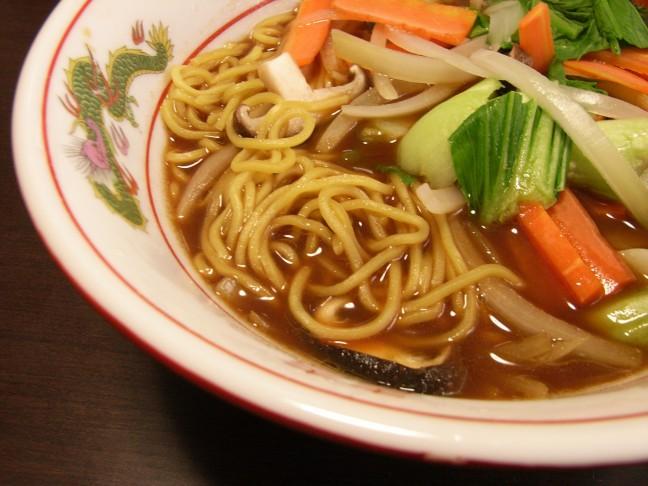Protein, calcium and vitamin D may be essential parts of any diet, but dairy is not. If you’re looking to cut out dairy, then read on! This week is about how easy it can be to maintain a healthy and holistic diet without milk-based products.
One reason for cutting out dairy is biological. Lactose intolerance affects many young Americans. Many factors determine your risk of intolerance, including ethnicity. Even if you are not intolerant, there is a good chance you may know someone who is, and being savvy about the alternative options to dairy can be a real asset.
Lactose intolerance is caused by deficiency of an enzyme that breaks down lactose, a sugar found in milk, into smaller particles so your body can digest them. Those without this enzyme may experience bloating, cramps, gas, upset stomach, nausea and diarrhea. If you think you are experiencing lactose intolerance, talk to your doctor.
These symptoms can occur with consumption of milk and milk-based products such as yogurt, cheese and ice cream. Those with mild lactose intolerance may be able to tolerate some fermented milk products–usually a half cup of products such as hard cheese and yogurt are good options.
Lactose intolerance is not to be confused with a milk allergy. Allergies cause an acute immune response that can result in swelling of the throat and/or face, hives, vomiting, rapid pulse and dizziness. Food allergies can be very severe and should be diagnosed by a doctor.
Dairy products are often touted for their high nutrient density. Although dairy is rich in protein, vitamin D and calcium, there are plenty of ways to get enough of these nutrients in your diet.
There are many milk alternatives on the market today. In fact, there are so many options that choosing the right one for you can be difficult. Read on for a summary of the most common milk substitutes.
Soy milk is by far the most common milk alternative on the market. There are several flavor varieties as well as low-calorie options. Soy milk is full of natural protein, low in fat and a good source of calcium. However, not all varieties are fortified with vitamin D, so make sure you read the label.
Almond milk is another popular substitute that comes in multiple flavors and calorie options. It is a good natural source of vitamin E and calcium; however, it is lower in protein than soy milk and cow’s milk.
Rice milk often wins taste tests in milk comparisons, but it is the lowest in protein and nutrition content. Nearly all nutrients are fortified, so be sure that you’re reading the label to see if it contains calcium and vitamin D.
Coconut milk is often considered a palatable choice as well. It is fortified like rice milk, however, it naturally contains saturated fat. The United States Department of Agriculture recommends Americans limit saturated fat to less than seven grams a day. So depending on the rest of your diet, coconut milk may or may not be the right choice for you.
There are many other alternatives, like hemp milk, oat’s milk and flax milk, that can be found in specialty stores. If you are interested in these products, try comparing their nutrition labels to a low-fat milk label.
An important note for vegans: A milk fortified in vitamin B12 can be a great choice since the vegan diet is naturally deficient in this essential nutrient.
Cooking with these products is easy: simply substitute milk with your choice of alternative as your recipes dictate. Make sure to choose the right flavor; you may like vanilla soy milk in your coffee, but it probably would taste funny in your scrambled eggs.
Substitution options don’t just stop at milk alternatives. Soy cheese and yogurt can be found in many grocery stores, and other options may be found in specialty stores. Don’t be afraid to ask what your market offers. You might be surprised! There are also many blogs and websites dedicated to dairy-free cooking that combine lactose-free ingredients in creative ways.
Not into the “alternative” route to make your diet healthy? No problem. There are plenty of other foods rich in vitamin D and calcium. Vitamin D can be found in salmon, tuna and eggs. Dark leafy greens like kale, spinach and broccoli are also good sources of calcium. If you don’t like these foods or avoid animal products as well as dairy, talk to a registered dietitian or doctor about possibly taking a supplement to meet your nutrient needs.
This week’s recipe is an indulgent dairy-free dessert, using no milk or milk substitutes.
Dairy-free Chocolate Cake
1 cake (13 by 9 inch)
Ingredients:
-2 cups sifted all-purpose flour
-2 1/4 teaspoons baking soda
-3/4 cup shortening
-1 1/2 cups dark corn syrup
-1 1/2 teaspoons vanilla extract
-1/2 cup unsweetened cocoa powder
-3/4 teaspoon salt
-1/3 cup white sugar
-3 eggs
-1 cup cold, brewed coffee
Preparation:
1. Preheat oven to 350 degrees Fahrenheit (175 degrees Celsius). Grease one 13 by 9 inch pan.
2. Sift together the flour, cocoa, baking soda and salt; set aside.
3. Separate eggs. Beat egg whites in a clean bowl until stiff peaks form.
4. Cream shortening and sugar in mixing bowl until light and fluffy, using an electric mixer at medium speed. Blend in the corn syrup and egg yolks. Beat in vanilla. Add dry ingredients alternately with coffee to creamed mixture. Gently fold in egg whites. Pour batter into greased 13 x 9 inch pan.
5. Bake in preheated 350 degree Fahrenheit (175 degree Celsius) oven for 45 minutes or until cake is done. Cool in pan on rack. Dust with confectioner’s sugar if desired and enjoy!
Rachel Werts is a 5th year majoring in dietetics. She works as a nutrition assistant at the Waisman Center and hopes to become a physicians assistant in the future.



















